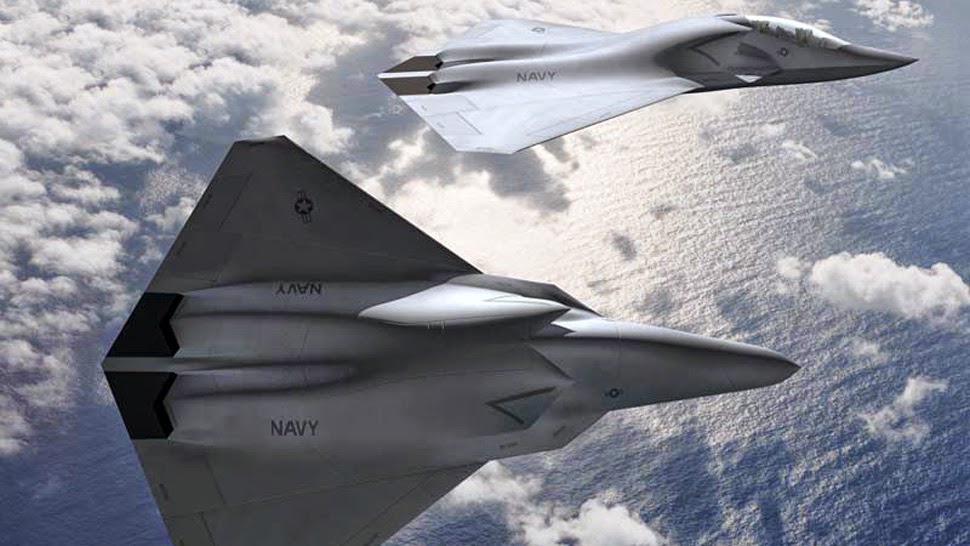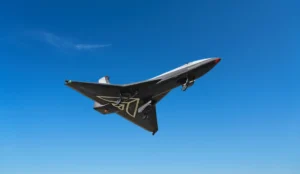Aurora Unveils Details of Experimental Fan-in-Wing Aircraft Design
Aurora Flight Sciences, a Boeing subsidiary, has released new information about its prototype fan-in-wing aircraft and shared an animation showcasing the craft’s vertical lift rotors.

Photo Source: https://thedebrief.org/
This innovative design, yet to be named, is part of a Pentagon X-plane initiative aimed at demonstrating technologies that combine high speed and runway independence. The Defense Advanced Research Projects Agency (DARPA) oversees the project, known as Speed and Runway Independent Technologies (SPRINT).
Project Goals and Design Features Runway independence typically refers to vertical take-off and landing (VTOL) capabilities. However, the US military is also considering alternatives, such as amphibian aircraft that can take off from water. Through SPRINT, the goal is to develop a prototype that can perform VTOL operations and achieve the high speeds associated with fixed-wing jets.
Aurora initially indicated plans for a blended-wing body aerostructure with internally ducted fans for vertical lift. Now, the company has provided further details on its design, including the number and placement of the rotors.
The latest rendering, released on May 20, showcases an uncrewed aircraft with a blended-wing-body design, a prominent V-shaped tail, and two oblong air intakes positioned low on either side of the nose.
Aurora’s demonstrator will feature three “fan-in-wing” (FIW) vertical lifting rotors: two located amidships and one near the front. An animation reveals that these fans will be covered by doors that open during vertical flight and close for forward travel.
Aurora hints at the possibility of adding more lifting fans in future designs to enhance capabilities.
“The choice of three lift fans reflects our strategy to simplify the demonstrator and streamline its path to flight test,” Aurora stated. “The FIW technology could be scaled to four or more lift fans to meet future aircraft requirements.”
Without revealing specifics, Aurora mentioned that the design “leverages existing engine solutions,” aiming to shorten the development timeline and reduce engineering risks.

Performance Targets and Capabilities DARPA has set an ambitious airspeed target of 400-450 knots (740-830 km/h) for the SPRINT aircraft. Aurora claims that its blended-wing design can achieve a cruising speed of 450 knots.
In addition to VTOL capability, Aurora’s SPRINT aircraft will also feature “super short take-off and landing” (SSTOL) capabilities, allowing it to take off and land conventionally. According to the Pentagon, short take-off and landing aircraft can clear a 15.2m (50ft) obstacle within 450m of take-off and stop within 450m after passing over a 12.2m (40ft) obstacle during landing.
While existing examples, such as the Lockheed Martin F-35B and BAE Systems/Boeing AV-8B Harrier II, primarily serve as expeditionary fighters, the SPRINT program aims to enhance mobility applications, particularly for US Special Operations Command. These missions often require deploying troops and equipment to remote or hostile locations.
Aurora seeks to demonstrate “game-changing capability for air mobility” with its SPRINT aircraft.
Project Advancement and Future Plans Aurora’s design was recently chosen by DARPA as the first to advance in the SPRINT competition. On April 30, the company secured a nearly $25 million contract from DARPA to progress to Phase 1B, which involves further design maturation over the next 12 to 18 months. Competitors such as Bell, Northrop Grumman, and Piasecki Aircraft have yet to be approved for this phase.
Aurora aims to complete a preliminary design review of its SPRINT proposal with DARPA within 12 months and hopes to have a working prototype ready for flight within 36 months.
This latest development marks a significant step forward in the quest to combine speed and runway independence in a single aircraft, potentially revolutionizing air mobility and military operations.






